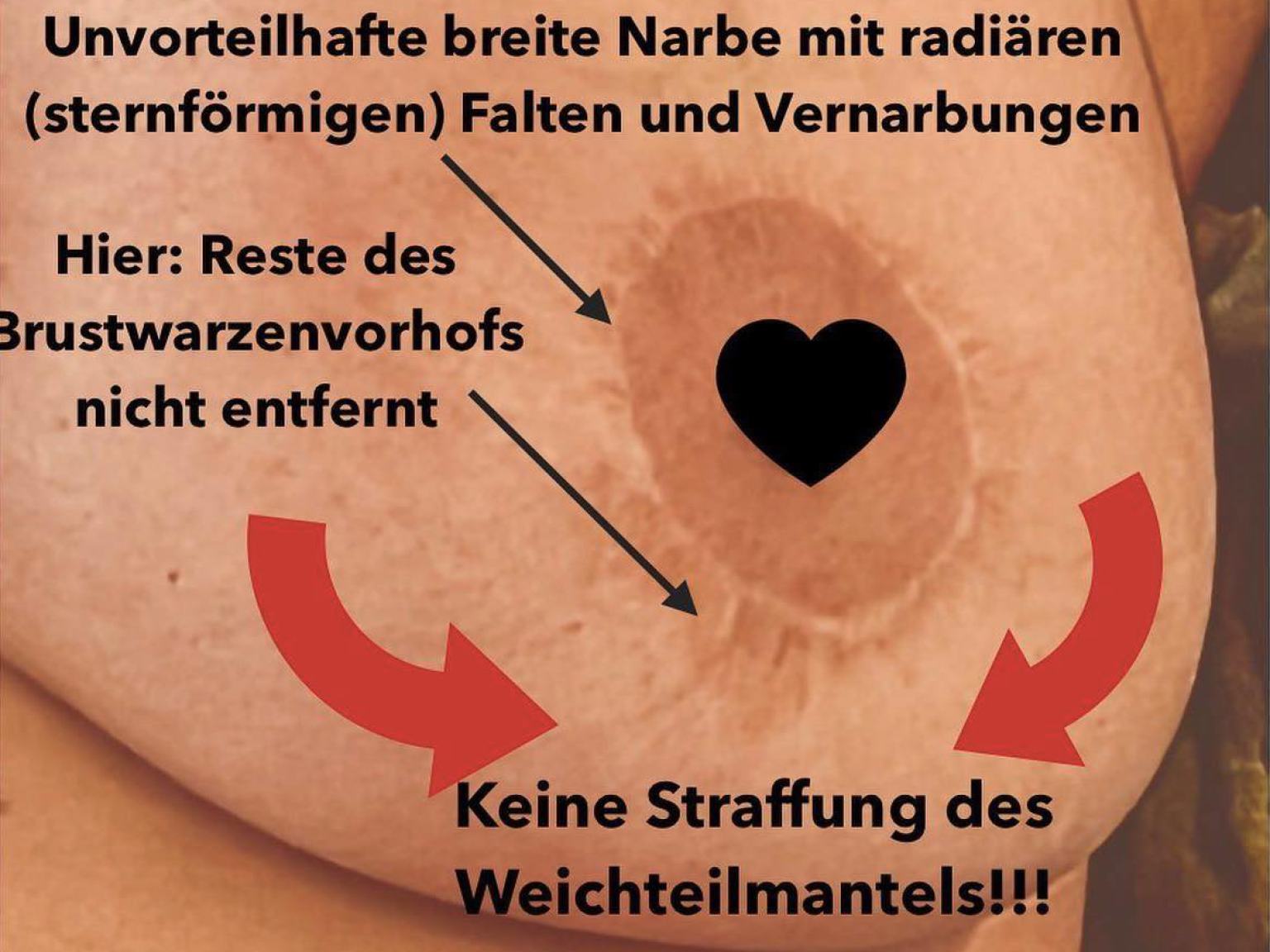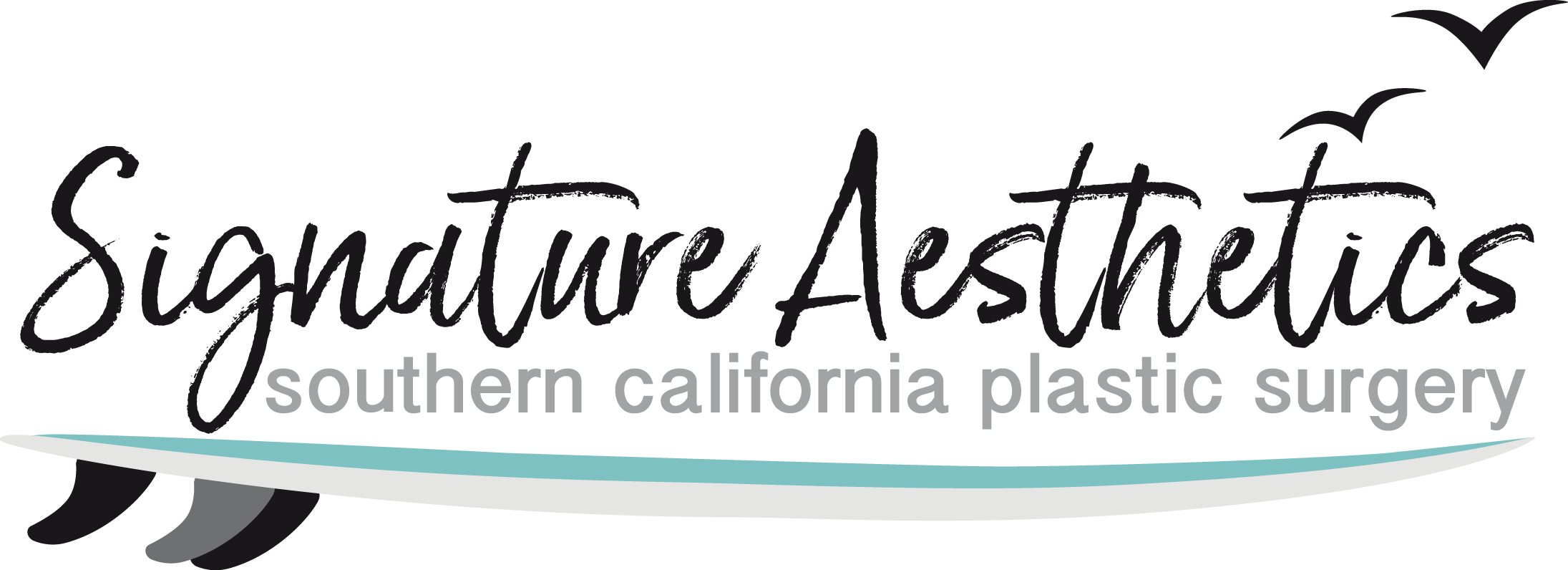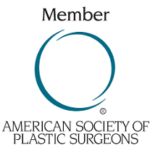Small breast lift as it should not be
The periareolar breast lift is a surgical procedure that, in Dr. Scholz’s opinion and experience, cannot work to truly achieve the goal of a “small breast lift”. Unfortunately, the DGÄP (German Society for Aesthetic Plastic Surgery) only states that unsatisfactory results are achieved with larger excess skin.
Dr. Scholz goes further here and considers this method of tightening a breast to be flawed in concept alone.

What is this breast lift method all about?
The breast lift method aims to improve the shape and position of the breasts, especially if they are sagging or drooping. In this procedure (periareolar or circular), an incision is made around the edge of the nipple to remove excess skin and reshape the breast. It is precisely the forms where Dr. Scholz believes that a different method successfully fulfills the wishes of the patients.
Why doesn’t it work?
On the one hand, the DGÄP already states that good results are unlikely to be achieved with larger excess skin. The main problem with periareolar breast lift is that the soft tissue mantle cannot be addressed or treated adequately.
Plastic surgeon Dr. Scholz demonstrates the problem areas (main image) using a recent operation for a small breast lift. A young patient(who had already undergone a breast lift elsewhere) came to him and the goal of a real breast lift was achieved.
What is the solution?
The solution that brings the breast to an appealing shape is a correct formal breast lift with repositioning of the nipple, tightening of the soft tissue mantle and, most importantly, reduction of the breast diameter. As a result of the procedure, the patient has youthfully shaped breasts.
General problems of the periareolar breast lift
There are also some potential problems and risks associated with periareolar breast lift surgery. The choice of periareolar breast lift is also difficult from this point of view.
- Scarring: The placement of the incision around the edge of the nipple can lead to visible scars. In some patients, the scars heal well and become less visible over time, while in others the scarring can be more pronounced. The individual predisposition to scarring and the correct care of the wound after the operation can have an influence on the appearance of the scars.
- Change in nipple sensitivity: The repositioning of the nipple and areola can lead to temporary or permanent changes in nipple sensitivity. Some women report increased or decreased sensitivity, while others may experience temporary numbness or tingling in the nipple. These changes may subside after a while, but can also be permanent.
- Asymmetry: Uneven tightening or positioning of the nipples can lead to an asymmetrical appearance of the breasts. Although surgeons strive to achieve a result that is as symmetrical as possible, there may still be slight differences in the shape, size or positioning of the breasts.
- Loss of the ability to breastfeed: With a periareolar breast lift, there is a risk that certain tissues or nerve structures that are important for the ability to breastfeed may be affected. Women who wish to breastfeed children in the future should discuss this risk with their surgeon, as alternative techniques may have less of an impact on their ability to breastfeed.
Conclusion
In Dr. Thomas Scholz’s experience, the periareolar breast lift or circular breast lift method, which is often referred to as a “small breast lift”, is not the most suitable method for breast lift surgery. Alternative approaches can be used to surgically treat problems in the soft tissue mantle.
The patient’s benchmark should be an excellent breast shape that justifies the effort. Dr. Scholz focuses on this goal together with the wishes of his patients.
© 2023 Dr. Thomas Scholz. Image – Drawing: Small breast lift method.



